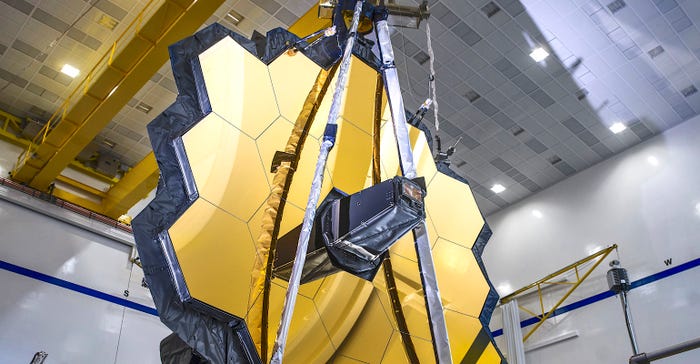Take a Look at NASA's First Photos from the Webb Telescope
NASA's Webb space telescope bends time to look at the early universe, but we had to patiently wait for its first images.

Three decades in the making and launched last year, NASA's $10 billion James Webb Space Telescope is finally open for business and we've gathered its early photos for this slide show. It is a large infrared telescope with a 6.5-meter primary mirror.
The Webb telescope will be the premier observatory of the next decade, serving thousands of astronomers worldwide. It will study every phase in the history of our Universe, ranging from the first luminous glows after the Big Bang, to the formation of solar systems capable of supporting life on planets like Earth, to the evolution of our own Solar System.
The Webb telescope was formerly known as the "Next Generation Space Telescope" (NGST). It was renamed in September 2002 after a former NASA administrator, James Webb.
Webb is an international collaboration between NASA, ESA (the European Space Agency), and the Canadian Space Agency (CSA). NASA's Goddard Space Flight Center in Greenbelt, Maryland, is managing the development effort. The main industrial partner is Northrop Grumman; the Space Telescope Science Institute will operate Webb after launch.
Several innovative technologies have been developed for Webb. These include a primary mirror made of 18 separate segments that unfold and adjust to shape after launch. The mirrors are made of ultra-lightweight beryllium. Webb's biggest feature is a tennis court-sized five-layer sunshield that attenuates heat from the Sun more than a million times. The telescope’s four instruments - cameras and spectrometers - have detectors that are able to record extremely faint signals. One instrument (NIRSpec) has programmable microshutters, which enable observation of as many as 100 objects simultaneously. Webb also has a cryocooler for cooling the mid-infrared detectors of another instrument (MIRI) to a very cold 7 kelvins (minus 447 Fahrenheit) so they can work.
About the Author(s)
You May Also Like





